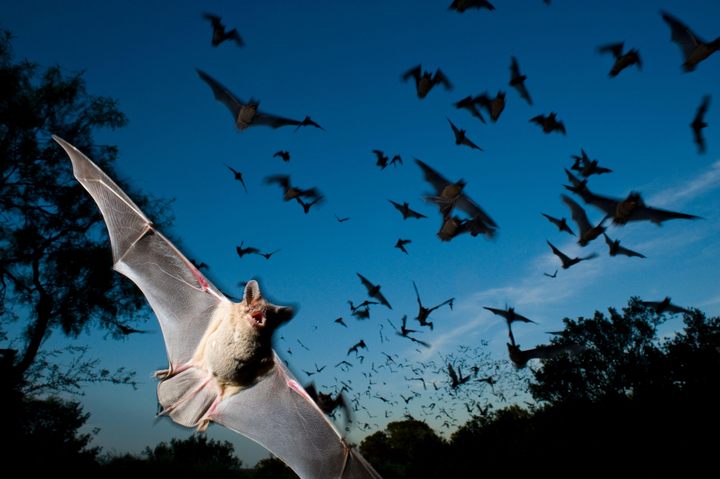
How to Go Bat-Watching
Once the sun goes down, these furry fliers get active. You can spot them almost anywhere you go, if you know how to look.
As part of our Atlas Obscura Goes to Summer Camp special package, we’re revisiting stories that have captured the summer camp vibe or explored some of its more unique subcultures. Enjoy this curated classic!
If you spend a lot of time outdoors at night in the summer, you might be used to seeing shaky, silhouetted creatures flitting above. Maybe you’ve stopped to watch them skim over your garden at twilight, or you’ve caught them while you’re camping near a lake, or you just sense a brief flash of movement outside your window. Birdwatching is great, but bat-watching is another world entirely.
Anybody can learn how to bat-watch, according to Merlin Tuttle and Teresa Nichta, cofounders of the nonprofit Merlin Tuttle’s Bat Conservation (MTBC) in Austin, Texas. And given the adaptability of these flying mammals, it’s quite likely there will be bats wherever you are. Tuttle has over 60 years of experience in the field and is considered one of the fathers of bat conservation in North America. Nichta is the organization’s outreach and archive manager which includes MTBC’s enormous photographic collection. Together, they offered Atlas Obscura some tips on how to get started.

Know What to Look For
There are more than 1,400 species of bats worldwide, so unless you live in the Arctic or Antarctic, you’re likely to be able to find them. In North America, these can include brown bats, pallid bats, Mexican free-tailed bats, gray bats, and many more.
You’ll need to keep an eye out for different bats, and in different ways, depending on what region you’re in, Tuttle says. For example, if you live in the Southwest United States or Mexico, you might see nectarivorous bats feeding on flowering agave plants, for which they’re also a key pollinator. These species are likely to be the lesser long-nosed and Mexican long-nosed bat, which also drink from flowering cacti. There are places in Alabama and Tennessee, where a kayak trip can take you to see gray bats leaving their caves and flying over lakes. If you’re in the Northeast United States, you might see a lot of little brown bats—the New York State’s most common species—or northern bats.
Lakes and other bodies of water are a great place to start (see below), and different species prefer different bodies of water. More agile species such as the big-eared bat prefer smaller bodies of water, while bigger ones—such as the western mastiff bat, which can reach a wingspan of at least 21 inches—need more runway, at least 100 feet of open space, to be able to come down for a drink. Tuttle even describes some species drinking from cattle water troughs. Supposedly, if you sit to watch one in some places, bats might fly down and drink as often as every couple of seconds.
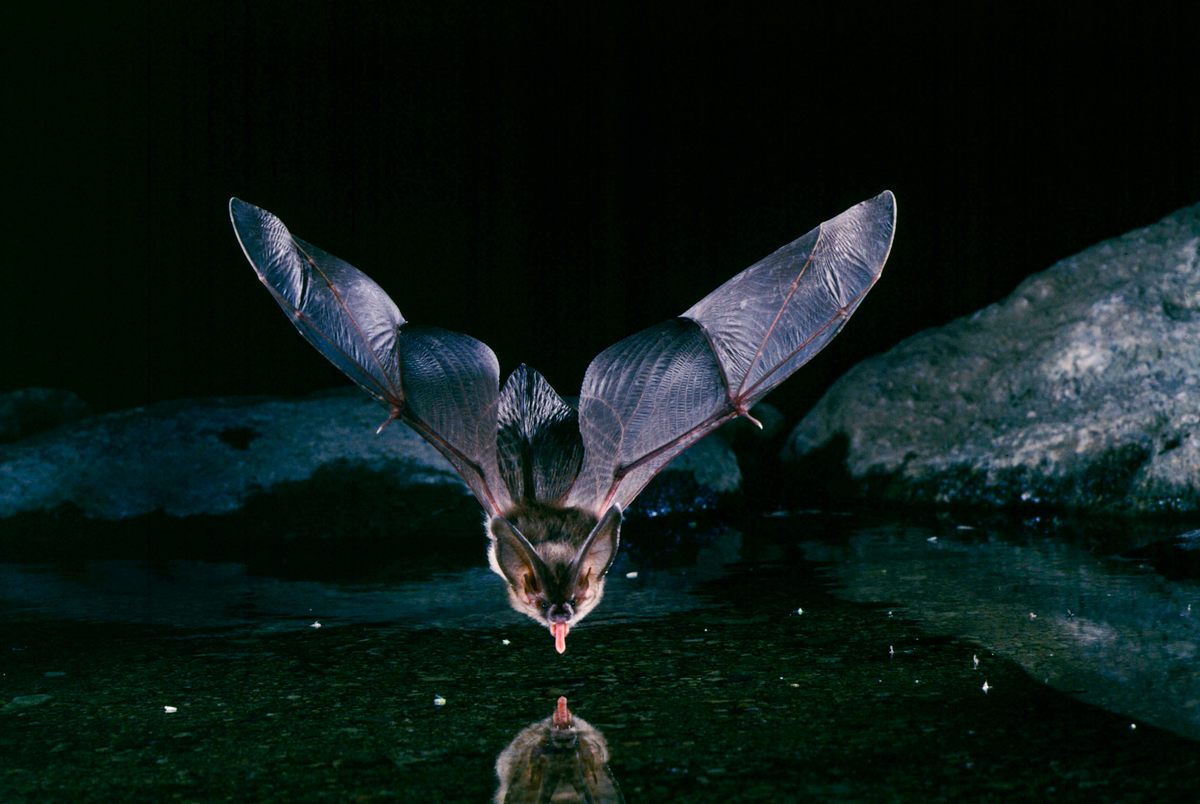
If you arrive at your chosen site in time for sunset, you should be able to see bats against the sky at dusk, before light levels become too low. They’re relatively easy to distinguish from birds: Their webbed wings are clearly silhouetted as they fly, and their wingbeats are faster than those of many birds. They may fly in a direct path or in a looping pattern as they search for insects, and sometimes there’s a slight flight stutter when they catch one. Listening closely might tell you it’s time to keep a lookout, as some bats are also audible echolocators. Spotted bats, for example, emit lower-frequency calls that can be picked up by the human ear.
Although bats on the wing can be hard to identify with the naked eye, there are still things to watch out for. Pay attention to wing shape (Long or short? Wide or narrow?) and flight patterns. Are the wingbeats fast or slow? Is the bat low-flying? Are there dips or dives in its flight? You can also narrow things down based in what state you’re in. Bat Conservation International has a collection of bat profiles sorted by region, with species characteristics such as size, range, and diet—helpful if you’re lucky enough to spot a bat catch an insect or swoop down on a piece of fruit.
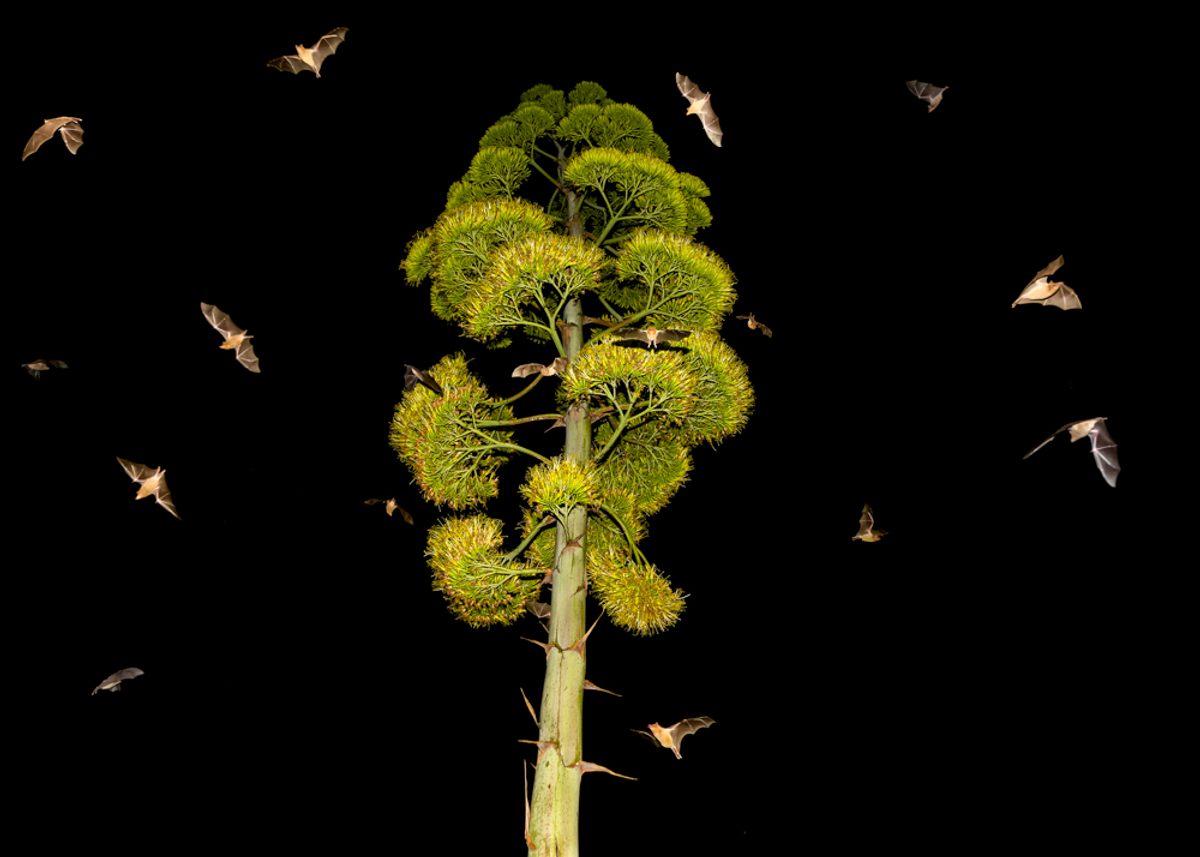
Get Your Timing Right
Bats are at their most active during the summer months, but in general they can be seen from spring to fall, as late as early November, depending on the weather and species. Some bats hibernate during the winter, while others migrate, which means that warm weather states might see them active year-round. This includes tree-roosting species such as hoary bats and cave-roosting varieties such as the Mexican free-tailed. (In Florida they do not hibernate, but might enter a torpor, or energy-saving state, though that’s only some of the time.)
Almost all bats are nocturnal and you won’t be able to spot them flying around during the day unless they’ve been disturbed. The majority can be seen starting at sunset, when they leave their roosts, and you might even see them returning at dawn. As a general rule, though, they’ll be most active when the insects are—for the first three hours after sunset. There are also some species that seem to be more or less active if the moon is full—depending on the activity of insect prey, and predators such as owls.
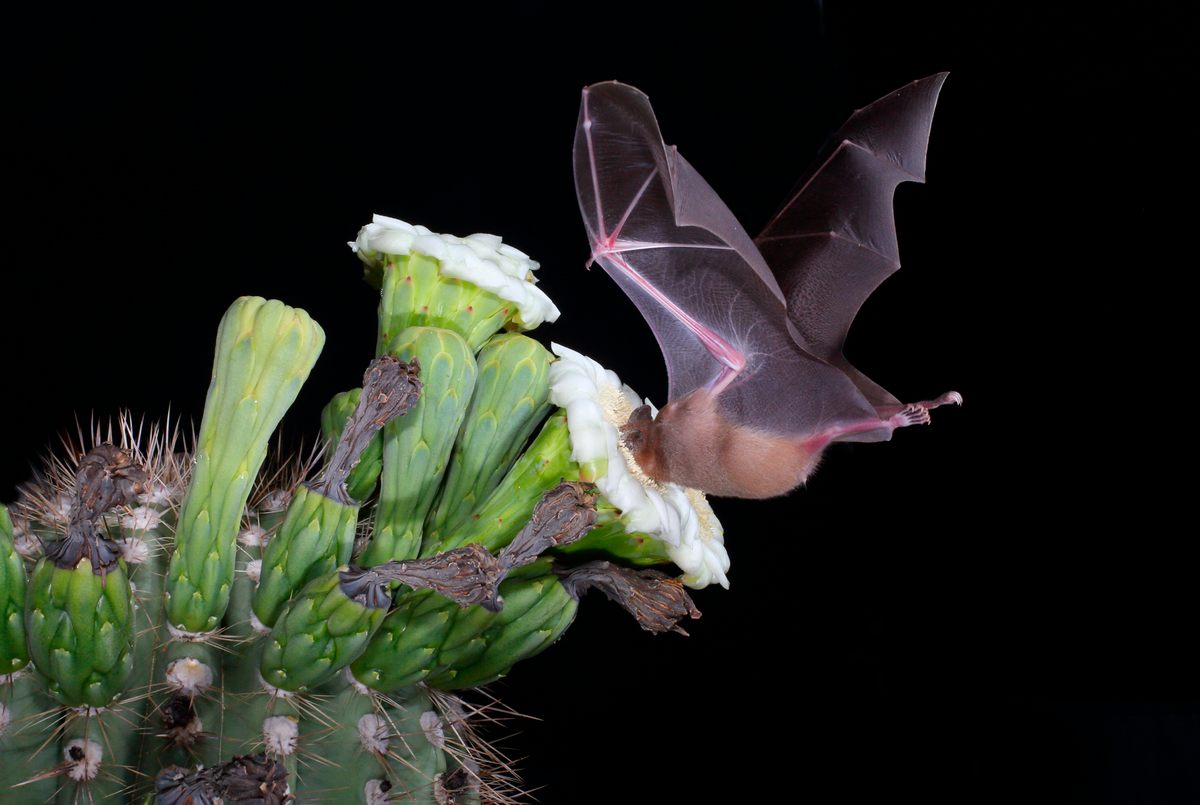
Know the Best Spots
Bats are widespread enough that you might be able to see them anywhere. from a parking lot to deep in the woods. But there are places you can go to increase your odds of seeing more. Many bats feast on insects, so look for them first (and don’t forget the bug spray). Some of the best places are bodies of open, still water—ponds and lakes teem with mosquitoes and other delicious insects. Most bats eat thousands of them per night—some can even eat up to a thousand in an hour—which can save farmers and gardeners a fortune in pest control (not to mention the environment). Every time a bat catches a moth, it’s not only eating the insect, but also all the eggs it is potentially carrying. That’s a lot of crop-damaging caterpillars.
Even well-lit areas can still be good for spotting bats if they have high concentrations of insects. Bats may venture close to street or porch lights. Interestingly, insects seem to linger around white lights more than yellow ones, so you might want to keep this in mind if you’re trying to bat-watch in your garden or a more urban area.
There are also plenty of bat tourism spots, known for their high concentrations of bats and predictable viewing. Maybe the most well-known one is the Congress Avenue Bridge in Austin, Texas, home to thousands of Mexican free-tailed bats since its renovation more than 40 years ago. From spring to fall, tourists and locals can gather to watch the bats stream out from underneath the bridge as the sun sets. Other spots include New Mexico’s Carlsbad Caverns, in a national park that is home to 17 bat species, and Tennessee’s Nickajack Cave, where you can go on one of the aforementioned kayak trips.

Caves are always another good place to spot bats (without entering them). Much like at the bridge, bats are likely to fly out of caves in large numbers when it begins to get dark. All you need is a good view of the cave mouth.
Overall, Tuttle recommends “a diverse habitat with open water near rugged terrain.”
Useful Equipment
You’ll probably need a good flashlight, but keep it pointed low. You can try to shine it across the flight path a bat is going to take to catch a glimpse of them in flight, but avoid pointing it directly at one. Some bat-watchers put color filters on their lights to make them red or green, which is less disruptive to bat behavior. In particular, try not to shine your lights around the roosts where bats rest, Tuttle says. It can discourage them from coming out again, which disrupts their feeding, and if they miss the early evening insect feeding time, they’ll be low on nutrition and energy for the whole night.
Don’t forget to dress for the weather and terrain, but also keep in mind the sound your clothes can make. According to Tuttle, bats are sensitive animals. Noises that seem innocuous to us can be highly unsettling for them: a sneeze, the sound of Velcro pulling apart, the rustling of a bag of chips: any of these could send them off.
As dusk turns to night, spotting bats with the naked eye becomes significantly harder. But they can still be found and identified with a bat detector, which can pick up the high-frequency squeaks bats make and convert them to sounds within human hearing range.
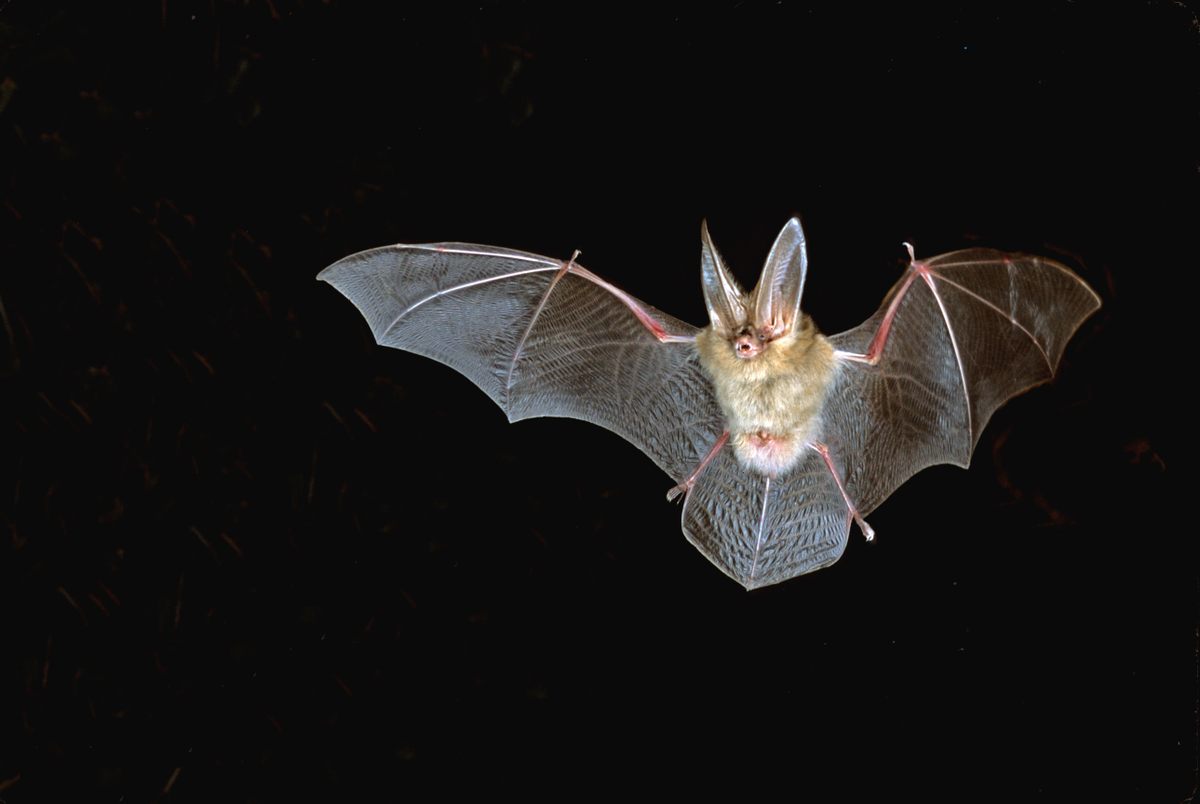
There are many detector options, from cheap and simple to expensive and feature-filled. Cheap options include kits that let you build your own detector, or entry-level models such as the Magenta Bat 4. Beginners may find these a little daunting, as it takes time to figure out which frequencies to tune into, and once you’ve heard something, you need to refer to an app such as BatLib, which contains an archive of bat recordings.
At the upper end is something like the Echo Meter Touch 2, by Wildlife Acoustics. It can be plugged into your phone and, with a companion app, can instantly tell you which species you are likely hearing. These start at around $179.
Staying Safe
Unlike birdwatching, bat-watching is primarily a nocturnal hobby. High-visibility clothing can be critical if you’re near roads. Take a friend or several. When it’s dark, there’s safety in numbers, especially in remote areas.
Finally, be aware of the environment. It’s good to be extra cautious around open water and the kinds of rocky areas that contain caves. You don’t want to tumble into deep water, stumble over jagged rocks, or disturb a resting rattlesnake.

Taking the Next Step
You can further a bat-watching hobby by attracting more bats to your area. There are many ways to do this, including installing a bat box or BatBnB. One of the biggest dangers to bats is habitat loss, with increasing competition for caves and other roosts. By installing a safe place for them to roost in your yard, you can combat this loss of habitat and provide some natural pest control to a garden.
Attracting more insects can attract more bats, too, so a garden pond can have a similar impact. Alternatively, you might put in some bat-friendly plants. Which ones depend on your region, but they’re likely to be native species.
The best way to help bats with your new bat-watching practice is to tell others about it. Sharing your positive experience and passion can counteract the negative reputation bats often have. “People being afraid of bats is probably one of the biggest threats to bats,” Nichta says. She also says that she wishes she’d known how valuable bats are as a species when she started bat-watching. The spectacle of furry, fluttering swarms is always enjoyable, but bat-spotting with an eye to how they’re helping an ecosystem is even more rewarding.
This story originally ran in 2023; it has been updated for 2024.




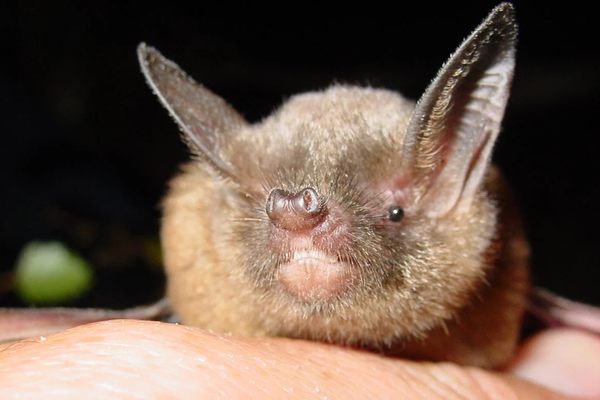
















Follow us on Twitter to get the latest on the world's hidden wonders.
Like us on Facebook to get the latest on the world's hidden wonders.
Follow us on Twitter Like us on Facebook